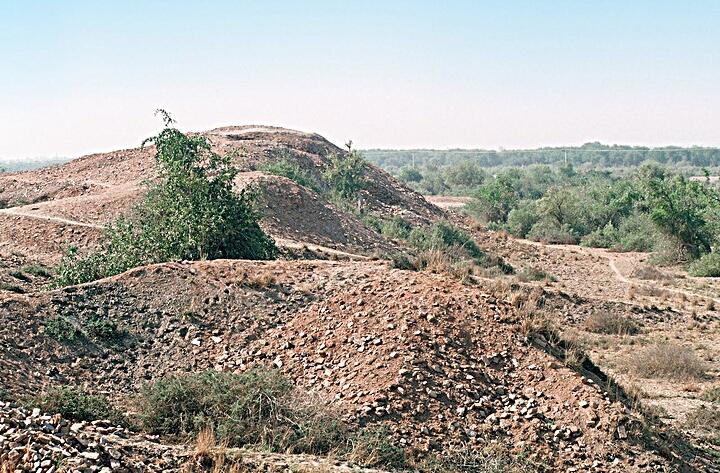Above: Excavation Debris Pile, DK-I Area, Mohenjo-daro
Through a comparative study of the artifacts, pottery, architecture, faunal, and botanical remains of Harappa, an increasingly sophisticated view is obtained of the complex and dynamic political, ideological, and economic processes that were an integral part of Harappan urban society. During the past several seasons of research at Harappa, we have oriented our excavations toward answering questions of two kinds - temporal and spatial (Kenoyer & Meadow 2000; Meadow & Kenoyer 2000, in press). First, we have chosen areas suitable for identifying and characterizing the critical transitional phases of the ancient settlement, beginning with the earliest village on the alluvial plain (Period 1), through the phases of urban development and fluorescence (Periods 2 & 3), and into the phase of decline (Periods 4 & 5). Although we still require information about the final occupations at the site, the outline of the early phases of development seems clear. As a result, we can begin to address specific questions regarding, for example, the origin and development of craft technologies and writing the period preceding the emergence of Harappa as a major urban center of the Indus Civilization.

